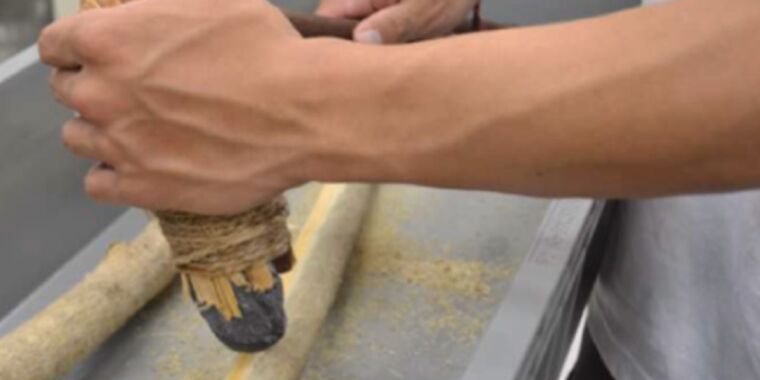When Japanese scientists wanted to learn more about how ground stone tools dating back to the Early Upper Paleolithic might have been used, they decided to build their own replicas of adzes, axes, and chisels and used those tools to perform tasks that might have been typical for that era. The resulting fractures and wear enabled them to develop new criteria for identifying the likely functions of ancient tools, according to a recent paper published in the Journal of Archaeological Science. If these kinds of traces were indeed found on genuine Stone Age tools, it would be evidence that humans had been working with wood and honing techniques significantly earlier than previously believed.
Isn’t this a common method of archeological research? Building tools and using them to study wear patterns, I mean.
This is the best summary I could come up with:
The resulting fractures and wear enabled them to develop new criteria for identifying the likely functions of ancient tools, according to a recent paper published in the Journal of Archaeological Science.
If these kinds of traces were indeed found on genuine Stone Age tools, it would be evidence that humans had been working with wood and honing techniques significantly earlier than previously believed.
Later artifacts dating back to Mesolithic and Neolithic time periods were more sophisticated, as people learned how to use polished stone tools to make canoes, bows, wells, and to build houses.
They used a stone hammer and anvil to create various long oval shapes and polished the edges with either a coarse-grained sandstone or a medium-grained tuff.
For instance, the authors used axe-type tools to fell Japanese cedar and maple trees in north central Honshu, as well as a forest near Tokyo Metropolitan University.
Cutting away at antlers and bones caused a lot of damage to the edges of adze-like tools, creating long and/or wide bending fractures.
The original article contains 709 words, the summary contains 170 words. Saved 76%. I’m a bot and I’m open source!
Even if it’s not unusual, it’s still cool. I need a video essay, stat.
deleted by creator




